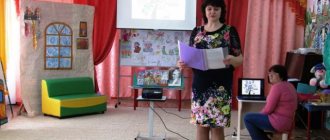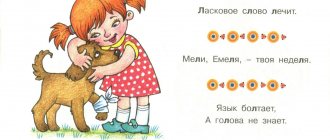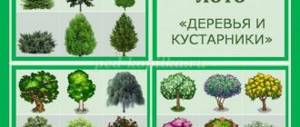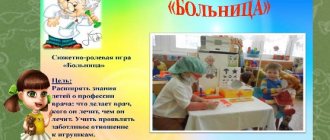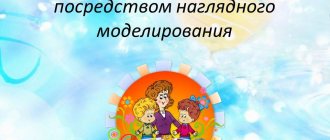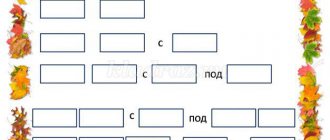Planning educational work in the middle group on the topic “Shoes”
Planning the educational process in the second junior speech therapy group No. 2
Period:
from November 18, 2020 to November 22, 2020
Topic of the week:
"Shoes" (lexical)
Objectives:
Expand ideas about late autumn, types of clothing and shoes;
To develop the ability to distinguish and name items of footwear. Interaction with parents
/ social partners:
Conversation with parents about the child’s health status on weekends;
Informing parents about the progress of the educational process; Individual conversations and consultations at the request of parents; Recommendations for parents on developing an understanding of the changing seasons and their order, on strengthening the skill of holding a pencil correctly, and painting over small parts of the picture; Offer advice on healthy lifestyle. date
18.11.2019
Joint activities of adults and children, taking into account the integration of educational areas
Organization of a developmental environment for children’s independent activities (activity centers, all group rooms)
Group,
subgroup
Individual
Educational activities in special moments
Morning:
Morning exercises. Articulation gymnastics. Finger game “How many shoes do we have?” Conversation: “How I spent my weekend.” Goal: fostering family values.
D/game “Fourth extra” with Vika B., Arina G. Goal: to develop attention and the ability to classify shoes.
D/game “Let’s tell Carlson how to eat properly.” Goal: forming the foundations of KGN.
To promote the development of children's interest in books through the addition of literature on a given lexical topic to the Book Center.
Encourage children to care for plants by creating conditions in the Nature Center.
GCD
- Speech development.
Correction (speech therapy session).
- Physical development.
Physical activity.
Plans by a physical education instructor.
Walk:
Reinforce your knowledge of the signs of late autumn. Find out why the first snow melts. Observe how the snowflakes spin P/and “Dashes” (to develop speed and dexterity), “The little white bunny is sitting” (to develop the ability to perform movements according to the text). D/i “Say the phrase” (Goal: teach how to coordinate nouns and adjectives). Work on the site: clearing the path from the snow. Independent activity during a walk. Role-playing games at the request of children. Productive activity. Vova V., Varyu G. practice throwing snowballs at a target.
2nd half of the day:
Health-improving gymnastics after sleep.
Reading: I. Muraveyka “I myself.” Goal: familiarization with the work. S.R.I. "Family".
D/game “Fourth wheel”. Goal: develop attention, consolidate ideas about shoes.
Working with children on instructions from a speech therapist
D/i “The bunny invited a bear and a hedgehog to visit.” Goal: develop the ability to behave correctly at the table.
Offer children cards with pictures of shoes.
An evening walk.
Look at a car parked nearby. P/i “Train” (to train children in running), “Day-Night” (to develop speed and agility). D/i “What sky?” (Goal: to consolidate the ability to coordinate a noun with an adjective). Work on site: clear paths for cars. Independent activity during a walk. Role-playing games at the request of children. Productive activity. Exercise walking on a limited surface Egor N., Marat S.
date
19.11.2019
Joint activities of adults and children, taking into account the integration of educational areas
Organization of a developmental environment for children’s independent activities (activity centers, all group rooms)
Group,
subgroup
Individual
Educational activities in special moments
Morning:
Morning exercises. Articulation gymnastics. Finger game "Boots". Conversation “How to cross the road.” Goal: to form the basics of safety, traffic rules.
D/i “Find the odd one out” with Misha K., Varya G. Goal: fix the score within 5.
Conversation “Find and name.” Goal: forming the basics of traffic rules.
Create conditions for the development of mathematical abilities. Introducing “Froebel's Gifts”, Voskobovich squares.
Support children in striving for independence and strengthening self-care skills.
GCD
- Speech development.
Correction (speech therapy session).
- Cognitive development
: FEMP (see item). Lesson 7.
Program content
: Educational objectives. Formation of ideas about the change of seasons and their order. Improving the skill of counting within five. Learning to compare two groups of objects and equalize two unequal groups in two ways, adding a missing object to a smaller group or removing an extra object from a larger group; objects in height and length. Updating adjectives (high, low, wide, long, short, narrow).
Corrective and developmental tasks. Development of visual attention and perception, mental and speech activity, speech-auditory memory, coordination of speech with movement, fine motor skills.
Educational tasks. Fostering a positive attitude towards participation in the lesson. Development of independence and activity.
- Artistic and aesthetic development.
Musical activity
. Music director plans
.
Walk:
Look at a car parked nearby. P/i “Train” (to train children in running), “Day-Night” (to develop speed and agility). D/i “What sky?” (Goal: to consolidate the ability to coordinate a noun with an adjective). Work on site: clear paths for cars. Independent activity during a walk. Role-playing games at the request of children. Productive activity. Exercise walking on a limited surface Misha K., Sasha M.
2nd half of the day:
Health-improving gymnastics after sleep.
Reading: V. Oseeva. "Magic needle" Goal: familiarization with the work.
D/game “Count it.” Goal: keep your score to 5 shoes.
Working with children on instructions from a speech therapist
Listening to music “Music Box” (from “Album of Plays for Children” by G. Sviridov). Goal: familiarization with the work.
Create conditions for outdoor games with musical accompaniment.
An evening walk.
Reinforce your knowledge of the signs of late autumn. Find out why the first snow melts. Observe how the snowflakes spin P/and “Dashes” (to develop speed and dexterity), “The little white bunny is sitting” (to develop the ability to perform movements according to the text). D/i “Say the phrase” (Goal: teach how to coordinate nouns and adjectives). Work on the site: clearing the path from the snow. Independent activity during a walk. Role-playing games at the request of children. Productive activity. Practice throwing snowballs at a target for Veronica L., Dima L.
date
20.11.2019
Joint activities of adults and children, taking into account the integration of educational areas
Organization of a developmental environment for children’s independent activities (activity centers, all group rooms)
Group,
subgroup
Individual
Educational activities in special moments
Morning:
Morning exercises. Articulation gymnastics. Finger game “New sneakers”. Conversation “Listen to your elders, help your younger ones.” Goal: to form attitudes towards elders and younger ones.
With Egor U., Vova V. to consolidate the techniques of coloring with colored pencils.
Situational conversation “If I want a friend’s toy.” Goal: to form rules of behavior.
Provide children with materials at the Creativity Center. Prepare coloring books and pencils. Independent games for children.
Free activity in the Game Center. Goal: To ensure an emotionally positive state of children in games.
GCD
- Artistic and aesthetic development.
Drawing (see item).
Topic: " Drawing by design ."
Program content
: Teach children to independently choose the theme of their drawing, bring their plans to the end, hold a pencil correctly, and paint over small parts of the drawing. Develop creativity and imagination.
- Physical development.
Physical activity.
Plans by a physical education instructor.
Walk:
Reinforce your knowledge of the signs of late autumn. Find out why the first snow melts. Observe how the snowflakes spin P/and “Dashes” (to develop speed and dexterity), “The little white bunny is sitting” (to develop the ability to perform movements according to the text). D/i “Say the phrase” (Goal: teach how to coordinate nouns and adjectives). Work on the site: clearing the path from the snow. Independent activity during a walk. Role-playing games at the request of children. Productive activity. Practice throwing snowballs at a target for Dima L., Sona M.
Health-improving gymnastics after sleep.
Reading: V. Oseeva “Who is stupider.” Goal: conversation based on what has been read, developing dialogue skills. S.R.I. “Family”, “Shoe repair”.
GCD
- Speech development.
Correction (speech therapy session).
2nd half of the day:
D/i "Associations". Goal: enrich the vocabulary on the topic.
Productive activity to strengthen the skill of coloring with colored pencils.
Working with children on instructions from a speech therapist
Conversation "Elder in the family." Goal: form an attitude towards elders.
Offer children various types of construction kits to build a “Repair Shop”.
Bring in the necessary materials for productive activities.
An evening walk.
Look at a car parked nearby. P/i “Train” (to train children in running), “Day-Night” (to develop speed and agility). D/i “What sky?” (Goal: to consolidate the ability to coordinate a noun with an adjective). Work on site: clear paths for cars. Independent activity during a walk. Role-playing games at the request of children. Productive activity. Exercise walking on a limited surface Semyon P., Arina G.
| date 21.11.2019 | Joint activities of adults and children, taking into account the integration of educational areas | Organization of a developmental environment for children’s independent activities (activity centers, all group rooms) | ||
| Group, subgroup | Individual | Educational activities in special moments | ||
| Morning: | Morning exercises. Articulation gymnastics. Finger game "Boots". Looking at family photos. Goal: form a positive attitude towards family values. | D/i “Find 5 differences” with Sona M., Egor N. Goal: to develop attention. | Situational conversation “I have a brother (sister).” Goal: to foster family values. Listening to music “Music Box” (from “Album of Plays for Children” by G. Sviridov). Goal: familiarization with the work. | Create conditions for games of cognitive activity. Create conditions for the formation of a culture of behavior in children. |
| GCD |
| |||
The theme is “ Parsley goes to work.” Program content : Learn to group objects according to purpose (satisfying the need for labor actions); cultivate a desire to help adults. | ||||
| ||||
| Walk: | Look at a car parked nearby. P/i “Train” (to train children in running), “Day-Night” (to develop speed and agility). D/i “What sky?” (Goal: to consolidate the ability to coordinate a noun with an adjective). Work on site: clear paths for cars. Independent activity during a walk. Role-playing games at the request of children. Productive activity. Exercise walking on a limited surface Lyoshey L., Maxima P. | |||
| 2nd half of the day: | Health-improving gymnastics after sleep. Reading: N. Pavlova “Whose Shoes.” Goal: familiarization with the work. S.R.I. “Family”, “Shoe repair”. | |||
| D/game “Associations”. Goal: consolidate knowledge about shoes. | Working with children on instructions from a speech therapist | Situational conversation “Take it - put it back.” Goal: to shape behavior in the group. | Introduction of board-printed games “Associations”. Add attributes to S.R.I. "Shoe repair". | |
| An evening walk. | Reinforce your knowledge of the signs of late autumn. Find out why the first snow melts. Observe how the snowflakes spin P/and “Dashes” (to develop speed and dexterity), “The little white bunny is sitting” (to develop the ability to perform movements according to the text). D/i “Say the phrase” (Goal: teach how to coordinate nouns and adjectives). Work on the site: clearing the path from the snow. Independent activity during a walk. Role-playing games at the request of children. Productive activity. Practice throwing snowballs at a target Yaroslav S., Egor U. | |||
date
22.11.2019
Joint activities of adults and children, taking into account the integration of educational areas
Organization of a developmental environment for children’s independent activities (activity centers, all group rooms)
Group,
subgroup
Individual
Educational activities in special moments
Morning:
Morning exercises. Articulation gymnastics. Finger game “How many shoes do we have?” Review of demonstration material on the topic. Goal: developing knowledge about clothing.
D/i "Puzzles" with Nastya L., Maxim P.
Goal: to develop constructive skills, the ability to compose parts into a whole on a topic.
D/game “Wonderful bag”. Goal: developing the sensory abilities of preschoolers.
Create a situation in the group for the artistic and aesthetic development of children. Free activity in the Game Center. Goal: To ensure the emotional and positive state of children in games and other types of independent activities.
GCD
- Artistic and aesthetic development.
Modeling (see p.).
Topic: “Modeling by design”
Program content
: Teach children to determine the content of their work and use familiar techniques in modeling. To develop the ability to select the most interesting works from those created (by topic, by execution). Foster independence and activity. Develop children's imagination and creativity.
- Physical development
: Physical activity (outdoors).
Walk:
Reinforce your knowledge of the signs of late autumn. Find out why the first snow melts. Observe how the snowflakes spin P/and “Dashes” (to develop speed and dexterity), “The little white bunny is sitting” (to develop the ability to perform movements according to the text). D/i “Say the phrase” (Goal: teach how to coordinate nouns and adjectives). Work on the site: clearing the path from the snow. Independent activity during a walk. Role-playing games at the request of children. Productive activity. Exercise Sonya S., Sasha M. in throwing snowballs at a target.
2nd half of the day:
Health-improving gymnastics after sleep.
Reading: N. Pavlova “Whose Shoes.” Purpose: conversation on the read work.
Final conversation-presentation: “Shoes.” Compiling a thematic album “The Past of Shoes.”
Working with children on instructions from a speech therapist
D/game: “Guess and name.” Goal: to develop the ability to guess by touch.
Introducing coloring books, stencils, board and printed games on the topic.
An evening walk.
Look at a car parked nearby. P/i “Train” (to train children in running), “Day-Night” (to develop speed and agility). D/i “What sky?” (Goal: to consolidate the ability to coordinate a noun with an adjective). Work on site: clear paths for cars. Independent activity during a walk. Role-playing games at the request of children. Productive activity. Exercise walking on a limited surface Elisha Ts., Varya G.
Summary of educational activities in the middle group on the topic “Clothing”
Author:
Alymova Marina Aleksandrovna, teacher of MBDOU “Kindergarten of a combined type No. 334”, g.o. Samara Description of material: I offer you a summary of educational activities for children of the middle group (4-5 years old) on the topic “Clothing”. This material will be useful for middle school teachers. Notes with the priority area “Communication”. Summary of educational activities in the middle group on the topic: “Clothing” Goal: expanding and clarifying children’s ideas about clothing. Objectives: 1. Expand and concretize ideas about clothing, its purpose, the details of which it consists. 2. Develop phrasal speech; auditory attention, memory. 3. Satisfy children's curiosity through play situations. 4. Develop coherent speech. 5. Develop the ability to draw with colored pencils, crayons, and felt-tip pens. 6. Strengthen the ability to hold a pencil correctly. 7. Activate creative imagination (decorate “clothes” according to plan). Materials and equipment: ball, easel, pictures of clothes, paper dress patterns, paper patterns - clothing puzzles, colored pencils, wax crayons, felt-tip pens. Preliminary work: examining clothes, talking about the purpose of clothes and their differences according to the seasons of the year, reading fiction: “A fairy tale about how clothes were offended,” “How a shirt grew in a field,” “I can dress myself...”, guessing riddles on the topic “Clothes and shoes”, examination of illustrations depicting people dressed according to the seasons of the year, didactic game “Guess the clothes from the description”. Forms of organizing children's activities 1) Communicative activity - speech didactic game “Catch the question - return the answer”, “Conversation about clothes and their details.” 2) Cognitive and research activities - the didactic game “I twist, I turn, I want to confuse.” 3) Motor activity - an active game for attention “Who is the most attentive?” 4) Productive activity - making children's creative products “Color the clothes”. Carrying out educational activities Children play. Suddenly, a ball rolls near the children and the teacher (the teacher takes it in his hands). Educator: Oh, guys, look, the ball has rolled towards us. Do you like to play ball? What ball games do you know? Educator: Well done, you know a lot of games. And knocked out, and football, and edible - inedible... I also know one very interesting game. It's called "Catch the question - return the answer." Well, do you want to play? Then listen to the rules of the game: I will take turns throwing the ball to you, and you must answer my question and return the ball to me. Begin. Questions for children: - What is the name of the clothes that are worn for the holiday? The teacher gives the correct complete answer to the question. The clothes worn for the holiday are called festive. Where do they sell clothes? — What do we call the clothes we wear in the summer? That's right, summer. — What color is Rita’s sweater? — What do we wear in winter? — What kind of headdress can we not do without in the summer? — What do people wear to the beach? —Who sews clothes? — What clothes do we wear in winter? — What do we wear when we go to bed? — What items are needed to sew clothes? That's right, fabric, thread, scissors, needle. — What are the names of clothes and shoes that you can wear in rainy weather? -What are clothes made from? During the game, the teacher seeks a complete, detailed answer from the children. Educator: Guys, you are great, you answered all my questions. I suggest you sit down on the carpet. Guys, look at the board. Please tell me what you see on it? Educator: That's right, pictures showing clothes. Now let's pay attention to each picture separately. The teacher draws attention to the fact that children name color, individual qualities, and the purpose of types of clothing. Educator: Guys, please tell me what is shown in this picture? Educator: That's right, this is a coat. What is it like? Well done, of course, it’s warm and wintery. What does the coat have? Look carefully at the picture. Well done, that’s right, the coat has a collar, sleeves, pockets, buttons... Educator: Guys, what is this? That's right, a dress. What color is it? Educator: Well done, you guys. And tell me, what is it? Educator: Well done, of course it’s a scarf. What is a scarf for? Well, what smart kids I have. It’s right that it’s warm, that it’s not blowing, that the cold doesn’t creep up your neck... Educator: Well done. Guys, what other names of clothes do you know? Of course, there are a lot of clothes. You can name: a fur coat, a hat, a jacket, trousers, a skirt, pajamas, socks, a T-shirt, a jacket. Educator: Guys, do you want to play some more? I'm very happy. The game is called “I’m spinning, I’m twisting, I want to confuse.” Look carefully at the board and try to remember what order the pictures are in, because I will ask you to close your eyes and mix up the pictures, and I will ask someone to come out here and correct everything. Do you remember? Then close your eyes. C'mon, don't peek. The teacher changes the pictures several times and asks the children to take turns helping him. Educator: Good guys, how well you coped with this difficult task. And now, I propose that you stand in a circle again. Now we will play one very fun and active game, it is called “Who is the most attentive?” Children form a semicircle in the play area. The teacher stands in the center and explains the rules of the game. Educator: Well done, guys. Now listen carefully to what I am going to say. If I say something from shoes, then you STOMP; if it is something from clothes - CLAPP; and if I say headdress - JUMP. Be careful. The teacher lists the names of clothes, shoes and hats. Educator: jacket, sandals, cap, fur coat, sneakers, scarf, boots, jumper, hat, felt boots, skirt, bandana, dress... Educator: How attentive you are, I almost didn’t manage to confuse you. The teacher takes 3 envelopes from the shelf. Educator: Guys, I completely forgot to tell you, in the morning the postman came to us and brought envelopes. Let's see what's in them? Wow, there are tasks for you and me. Let's take a look and try to complete it. Fine? The envelopes contain clothing details from which you need to assemble pictures. The first team will get the clothes we wear in winter (coats). The second one has clothes that we need in the summer (dress). And the third team has clothes that will be useful to us in spring and autumn (raincoat). Educator: Guys, you are all so great. We coped with such a difficult task. Oh, guys, there’s something else in the envelope. Look, there are the dresses, coats and raincoats that we were collecting just now. The team that collected the coats has the coat patterns. The team that collected the dresses had dress patterns. The team that assembled the raincoat had the raincoat patterns. But for some reason they are all white. Guys, let's look at each other, do we have white, one-color clothes? No, of course not. Our clothes are bright and colorful. Let us go to the tables and paint these patterns in bright colors. On our tables we have pencils, wax crayons and markers. Don't forget that you need to hold the pencil in your hand correctly. Children sit at tables and begin the task. Educator: And I also got the pattern. How I love to color. Now I will draw a bright dress. Guys, please tell me, here we are decorating a cloak, coat and dress, all these are clothes. How is it different? That's right, it differs in that we wear all this in different seasons of the year. A coat in winter, a raincoat in spring and autumn, and a dress in summer. Well done guys, we worked hard today.
We recommend watching:
Notes of the NOOD in the area of "Cognition" in the middle group "Let's Help Friends" Notes of a lesson on traffic rules. Middle group
Summary of a lesson in the middle group on speech development with elements of creativity Plan of a lesson for the middle group of kindergarten.
Similar articles:
Summary of GCD in the middle group in artistic creativity
Lesson summary on artistic and productive activities in the middle group
Summary of entertainment in the junior and middle groups
Summary of GCD for preschool educational institutions on the topic: “Our legs”
Summary of GCD in kindergarten on the topic: “Our skin”
Plan of notes for the middle group on the topic “Hats, clothes and shoes”
Outline of a lesson on cognitive development in the middle age group “Clothes, shoes, hats”
Target:
to form ideas about clothing, shoes, hats, their purpose, use and care.
Objectives: Cognitive development
- show the functional purpose of items of clothing, shoes, hats, referring to the realities of children's lives;
- give an idea that clothes are selected depending on weather conditions - form basic ideas about clothing: clothes can be sewn, knitted, bought; there are festive, uniform and everyday clothes, as well as for sleep, for sports, at home, etc. - lead to the practical development of the concept of “part and whole” Speech development
- develop the ability to describe clothing, name its features, connect sentences;
-practice in the use of singular and plural forms of nouns; learn to correctly use the corresponding adjectives in speech; -develop the grammatical structure of speech and enrich vocabulary. Social and communicative development
- teach children to use knowledge about clothing;
- teach children to choose clothes by size and gender; — update and supplement children’s knowledge of what material various objects are made of. Physical development - develop fine and gross motor skills; — acquiring experience in motor activity aimed at developing coordination of movements and performing basic movements; — formation of cultural and hygienic skills. Artistic and aesthetic development - to develop abilities and creativity, fantasy, imagination. - to cultivate artistic taste and the formation of an aesthetic attitude towards the surrounding world. Progress of the lesson Entry
Teacher - Remember and repeat after me a series of words: Collar, cuffs, sleeves, lining, pocket, zipper, frill, buttons, hem, sleeves, loops, belt. - You repeated the words. What do they represent parts of - furniture, clothing or dishes? That's right, these words refer to parts of clothing. In addition to clothes, we also wear shoes and hats. Today we will learn a lot of interesting things about all these things, and a fairy-tale hero, whose name is Tailor, will help us! He had a wise grandfather, a tailor, who taught him everything! Shall we go visit him? Then, with a wave of your magic wand, get up from your chairs and spin around your axis once! — We spun, we spun, and we found ourselves visiting! Slide No. 1 “Atelier and Tailor”
Main part Guys, the Tailor greets you and wants to find out how well you know your wardrobe items. To do this, you need to guess what is the fourth odd one in the picture? No. 2,3, - with the image of four objects, one of which is superfluous. You did great, look at the Olya doll while visiting Tailor, she accidentally spilled juice on her favorite dress, but it didn’t wash off. I had to take it to the dry cleaner, because you can’t walk around untidy, right guys? Olya came to place an order, but doesn’t know what to choose according to the season, can we help? Didactic game “Dress the doll Olya” While you and I were working, the little tailor completed several orders, but he doesn’t remember what was intended for whom - can you tell by its appearance? Slides “Who wears this special clothing?” - No. 4,5,6,7 – schoolchildren, athletes, doctors, military.
2. Didactic game “What is made of what” My friends, please tell me what types of fabric you know and what time of year they are intended for? Didactic game “What is made of what?” The little tailor says that he hasn’t met such smart guys for a long time and invites us to guess his riddles. Slides No. 8,9,10,11,12,13,14 - dress, pants, hat, rubber boots, mittens, robe. The final stage
You are smart and clever! And now the Tailor needs to work, and we need to go to the group. Now I’ll wave my magic wand again, and you’ll spin around. Teacher - Spin around, spin around and end up in the group! I was surprised by your knowledge. Take your seats. After returning to the group, the teacher consolidates the children’s acquired knowledge about making clothes. Slides No. 15,16,17 clothes can be sewn, knitted, bought, for example
Sums up the results - praises those who are active, encourages those who did not succeed. Reflection
Invites children to take pieces of fabric and go to pre-set scales with bowls: - put your piece in the green bowl if the child would like to visit the Tailor again; — put it in yellow if the child was bored and didn’t really enjoy the trip. Thanks everyone for participating.
